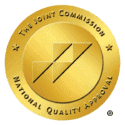
Understanding Alcohol Withdrawal Syndrome (AWS)
Alcohol is one of the most frequently abused substances in the United States, and alcohol use disorder (alcoholism) is one of the most common addictions. Once someone has developed this disorder, the distress of alcohol withdrawal syndrome (AWS) can make it extremely difficult for them to quit drinking. This can be particularly true of people who try to end their alcohol abuse on their own, without proper professional care.
What is Alcohol Withdrawal Syndrome?
When a person develops alcoholism, their system adapts to the continuous presence of alcohol. When this person abruptly stops drinking, or when they are prevented from acquiring and using alcohol, their body can respond with a variety of painful physical and psychological symptoms. Clinical professionals refer to this experience as alcohol withdrawal syndrome.
Symptoms of AWS
The type, intensity, and duration of alcohol withdrawal symptoms can vary considerably from one person to the next. Factors that can influence a person’s experience with alcohol withdrawal syndrome include their age and gender, how much and how long they have been drinking, and if they have any co-occurring medical or mental health concerns.
With these caveats in mind, someone who goes through alcohol withdrawal syndrome may develop physical symptoms such as the following:
- Heart palpitations
- Elevated blood pressure
- Headaches
- Elevated body temperature
- Excessive perspiration
- Gastrointestinal distress
- Loss of appetite
- Insomnia
- Nightmares
- Exhaustion and fatigue
- Alcohol shakes, tics, twitches, and/or tremors
The psychological impact of alcohol withdrawal can include the following types of symptoms:
- Powerful cravings for alcohol
- Agitation and irritability
- Anxiety
- Depression
- Confusion and disorientation
- Hallucinations
- Delirium
Is Alcohol Withdrawal Actually Deadly?
For people who have become addicted to most drugs, withdrawal can be extremely uncomfortable, but it rarely poses a long-term health threat. Unfortunately, alcohol withdrawal can be both painful and dangerous. The risk is especially high for people who have a long history of heavy alcohol abuse.
As an indicator of the risk faced by heavy drinkers, a 2010 study in the journal Alcohol and Alcoholism reported a 6.6% fatality rate among 436 alcohol withdrawal patients who received care at one Spanish hospital over a 16-year period.
More than 70% of the patients whose data were included in the Spanish study developed delirium tremens. Typically referred to as the DTs, delirium tremens is a severe subset of alcohol withdrawal syndrome that involves the following symptoms:
- Visual hallucinations
- Extreme disorientation
- Dangerously high heart rate
- Hypertension
- Seizure
Experts estimate that more than one of every three people who develop the DTs would die if they didn’t get appropriate medical care. Thanks to the ability of treatment professionals to address these symptoms, the actual fatality rate among people who have the DTs is estimated to be between 1%-5%.
What are the Available Treatments for Alcohol Withdrawal Syndrome?
The best option for dealing with alcohol withdrawal syndrome is to enter a medically supervised detoxification program. Here are a few of the many potential benefits of starting your treatment experience with detox:
- If you try to quit drinking on your own, the distress of withdrawal can quickly push you back into active alcohol abuse. When you’re in detox, you won’t have access to alcohol or other addictive substances, which eliminates your risk of immediate relapse.
- Reputable detox programs are staffed by experienced professionals who are familiar with all aspects of the withdrawal process. Knowing that you are being cared for by dedicated individuals who can address any contingencies that may occur can be a source of great peace of mind.
- Your detox treatment team will be able to offer both medical and therapeutic support to safeguard your health and minimize your discomfort. A member of your team will be available 24/7, so you will always be able to summon help if your symptoms become too intense.
- Participating in therapy while you’re still in detox can prepare you to fully engage in the post-detox phases of your treatment, which can improve your ability to achieve successful, long-term recovery.
- When you complete detox at a rehab center that also offers inpatient and outpatient programming, you can transfer directly into the next phase of your treatment. This promotes continuity of care and reduces your risk of early relapse.
What Comes After Detoxing From Post-Acute Alcohol Withdrawal Syndrome?
As we’ve established in this post, detox can be an essential step for people who want to free themselves from the chains of compulsive alcohol abuse. But detox alone can’t prepare you to address the psychological, behavioral, and social aspects of recovery. This is why it is so important to enroll in an inpatient or outpatient program once you’ve completed detox.
- While you’re in residential or inpatient rehab, you will live at the facility where you’re receiving care. This provides temporary respite from the pressures and distractions of everyday life, so you can focus your full attention on your treatment and your recovery. Residential rehab programs typically offer daily schedules that feature a variety of therapies and support services, along with structured recreation and leisure time.
- In an outpatient rehab program, group therapy is usually the main method of care, though other services are typically also offered as well. Depending on which type of outpatient program you enroll in, you may take part in either full or partial days of treatment. When the program is not in session, you can return to your home or to an alternative supported residence.
Determining which level or levels of post-detox care are right for you is a personal decision that you should make in consultation with the members of your treatment team. Some people transition from detox into residential rehab, then step down to an outpatient program. Others go from detox to outpatient care.
Remember: There’s no such thing as one perfect path to recovery. What’s most important is finding the path that’s perfect for you.
Contact Our California Alcohol Detox Center Today
If alcohol withdrawal syndrome has kept you trapped in the downward spiral of compulsive drinking, please know that help is available. Sanctuary Treatment Center offers personalized residential and outpatient services for adults who have been struggling with alcoholism and certain co-occurring mental health concerns.
Features of care at our alcohol rehab program in southern California include a safe and respectful environment, personalized treatment plans for all patients, multiple forms of therapy, and thorough aftercare support. With the guidance and support of our dedicated treatment professionals, you can start living the healthier life that you deserve.
To learn more or to schedule a free assessment, please visit our Contact page or call us today.


